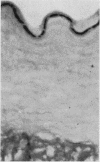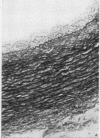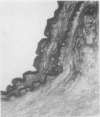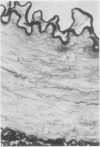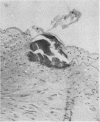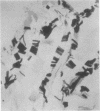Abstract
Twelve peripheral arteries are described in 59 patients of all ages. Accumulation of ground substance in the media, accompanied by small foci of calcification of the internal elastic lamina, was found in the large leg arteries of young adults, and progressively in a wider series of arteries throughout life. This picture showed no relationship to hypertension, to Mönckeberg's sclerosis, or to the development of atheroma. A notable quantity of ground substance may be a feature of early intimal development, and of a thickened intima in adult life, and probably the major constituent of an organizing thrombus.
Organizing thrombi were apparently incidental findings at several sites even in young adults, and showed no association with the state of the arterial wall beneath the lesion, the wall being in fact normal, though accumulated mucopolysaccharide was always present. Atheroma increases with age, and its focal incidence gives way to confluence in the arteries of the leg. Occlusive peripheral artery atheroma was found only in cases where the cause of death was severe atheroma, e.g., coronary artery disease and abdominal aortic aneurysm, or in myxoedema, in which the incidence of occlusive lesions may differ from that in severe generalized atheroma.
Elastic tissue is described in all coats of the artery wall, with some variants of the common pattern. The musculo-elastic cushion is not seen after adolescence, and it is suggested that the cushion represents the growing point of the artery. Longitudinal muscle bundles are almost confined to the popliteal artery, where they may form an essential buttress for a large branching artery subject to unusual external stresses.
The functions and origin of the ground substance are discussed.
Full text
PDF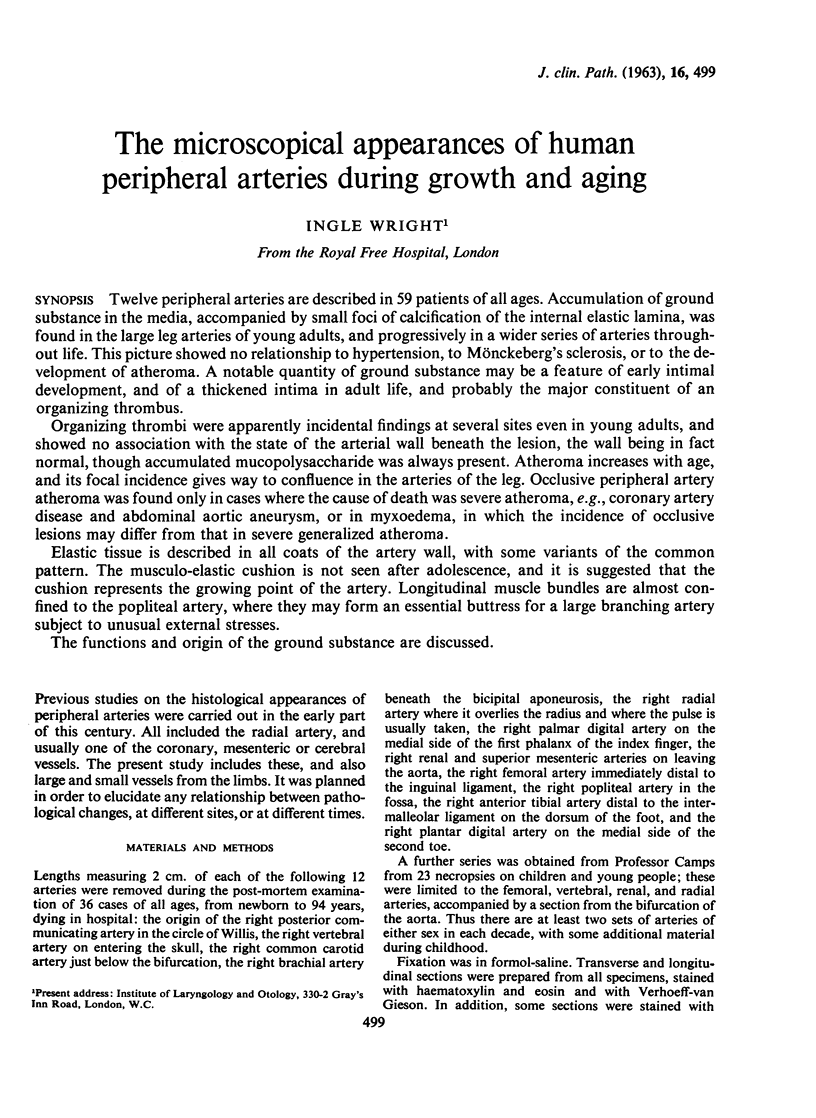

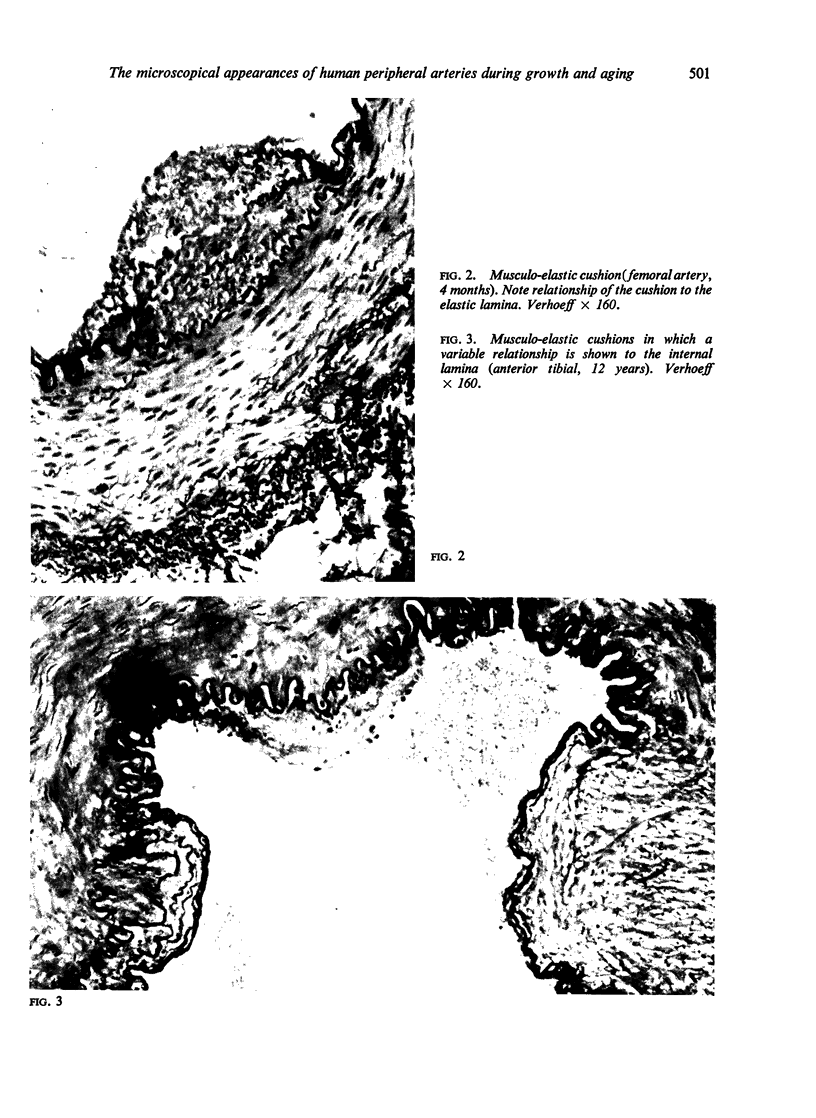



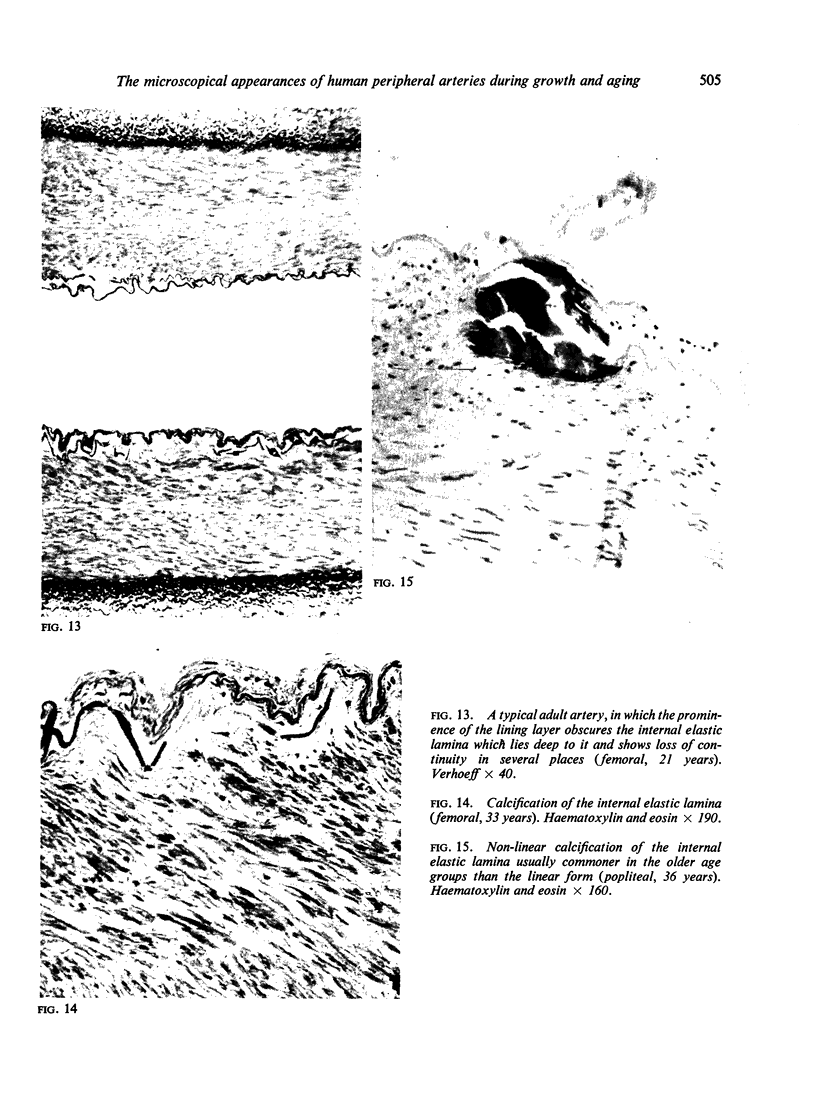
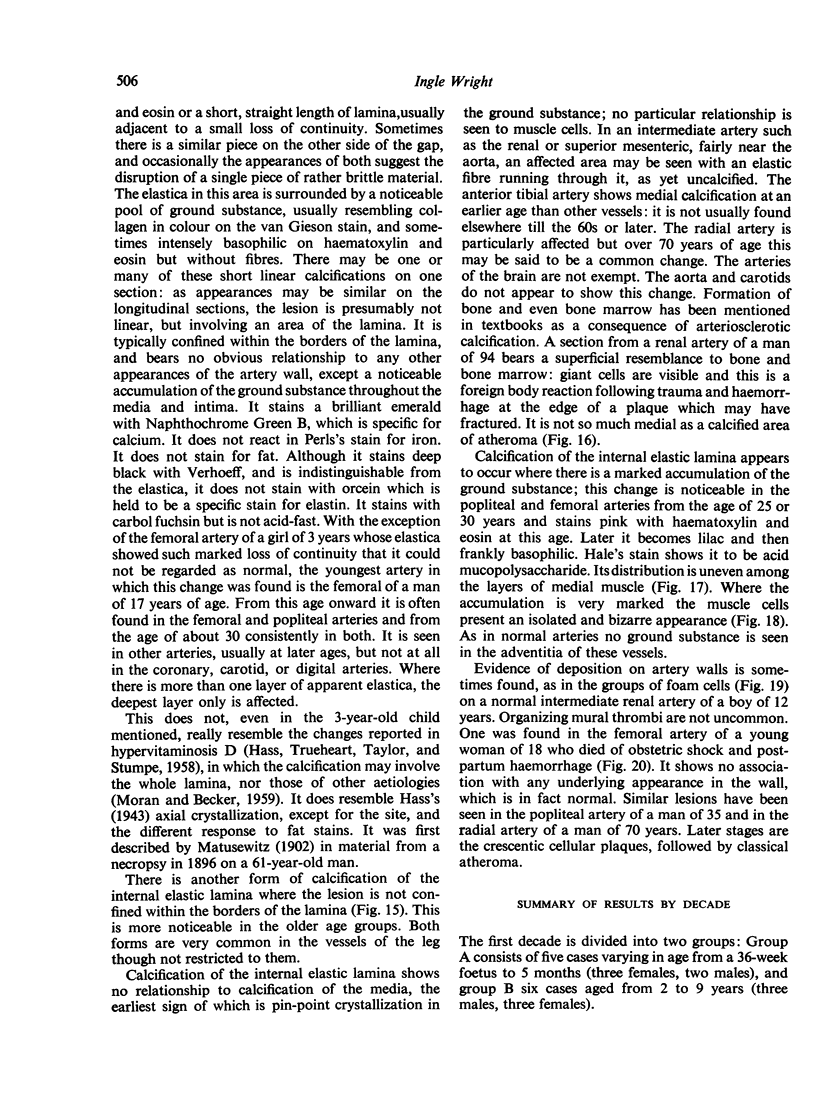

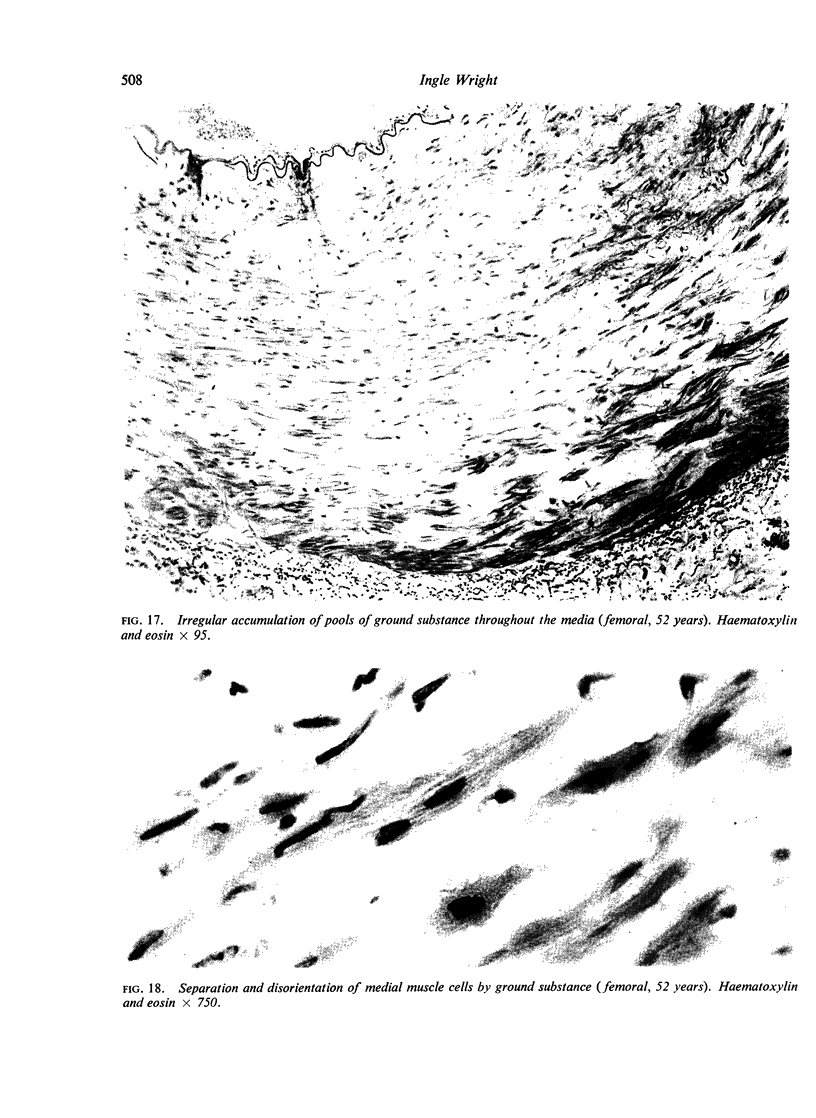
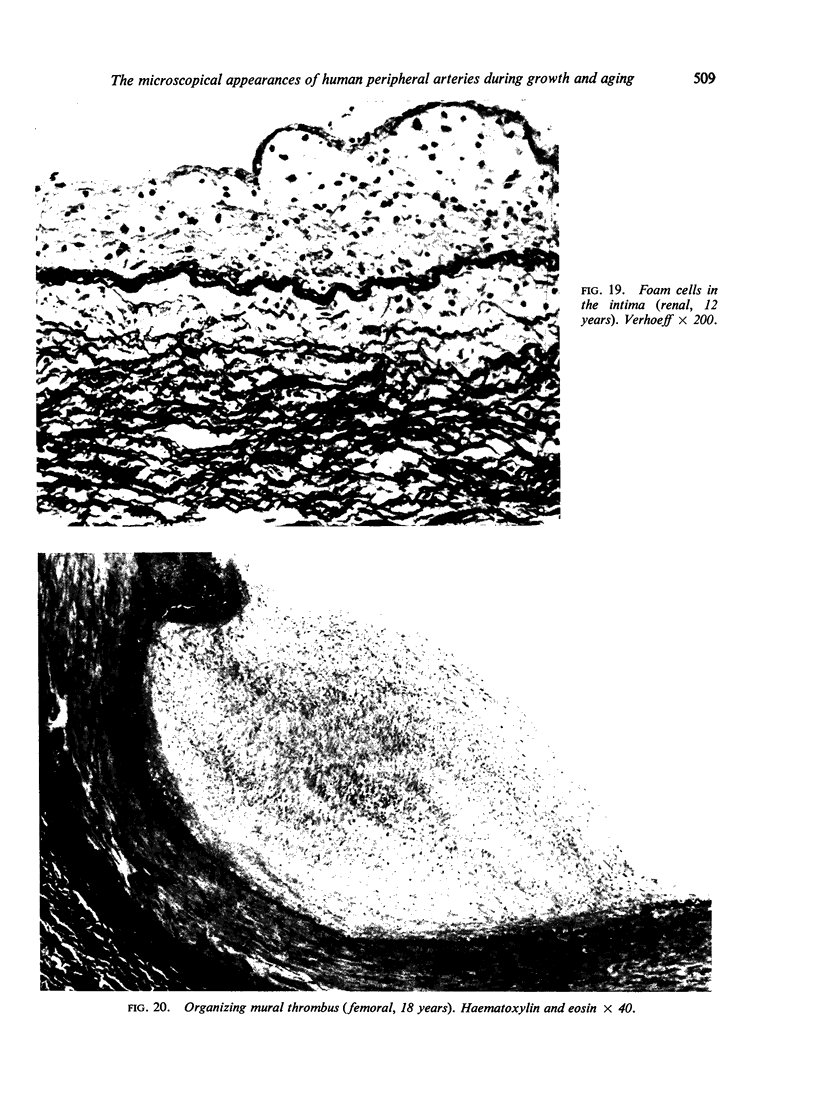
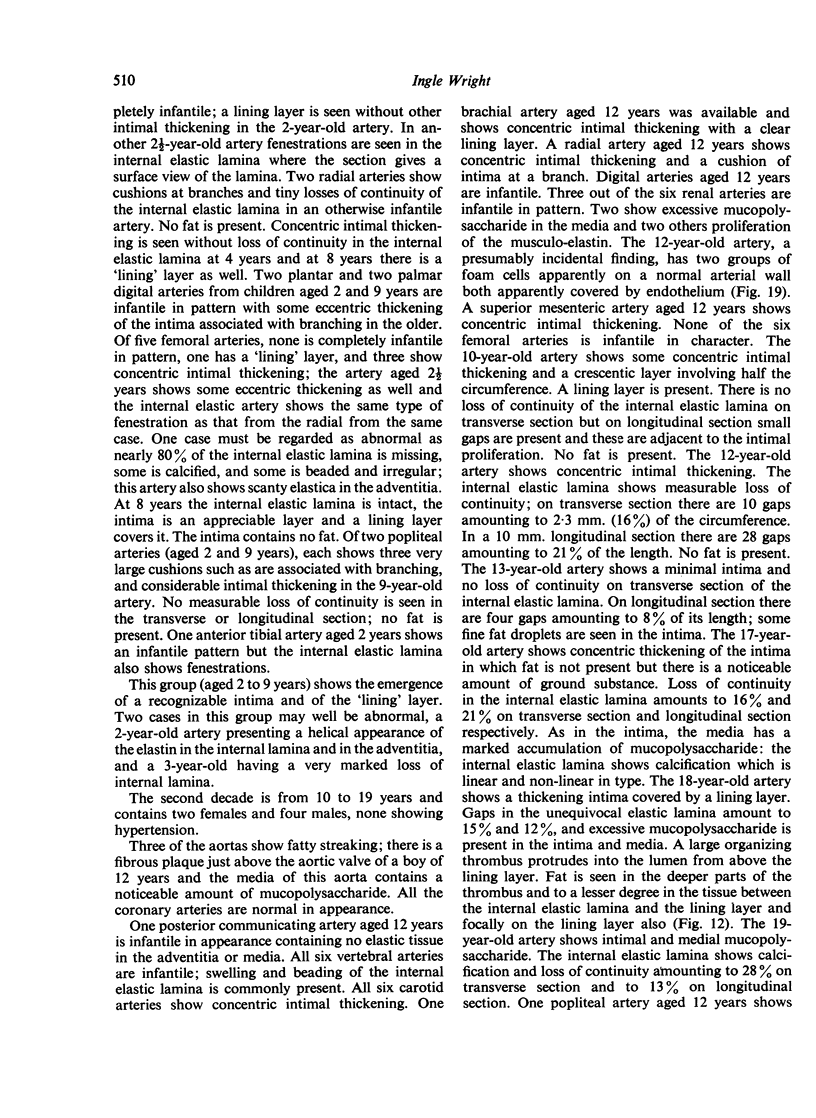
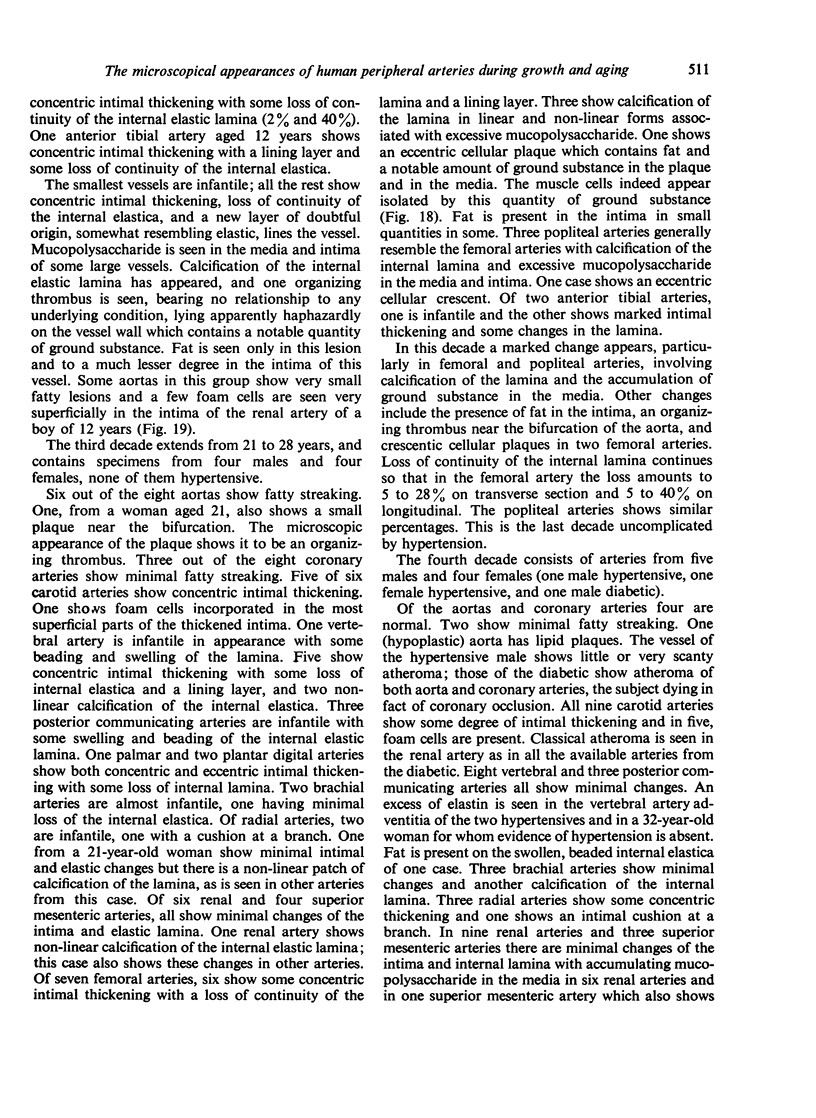
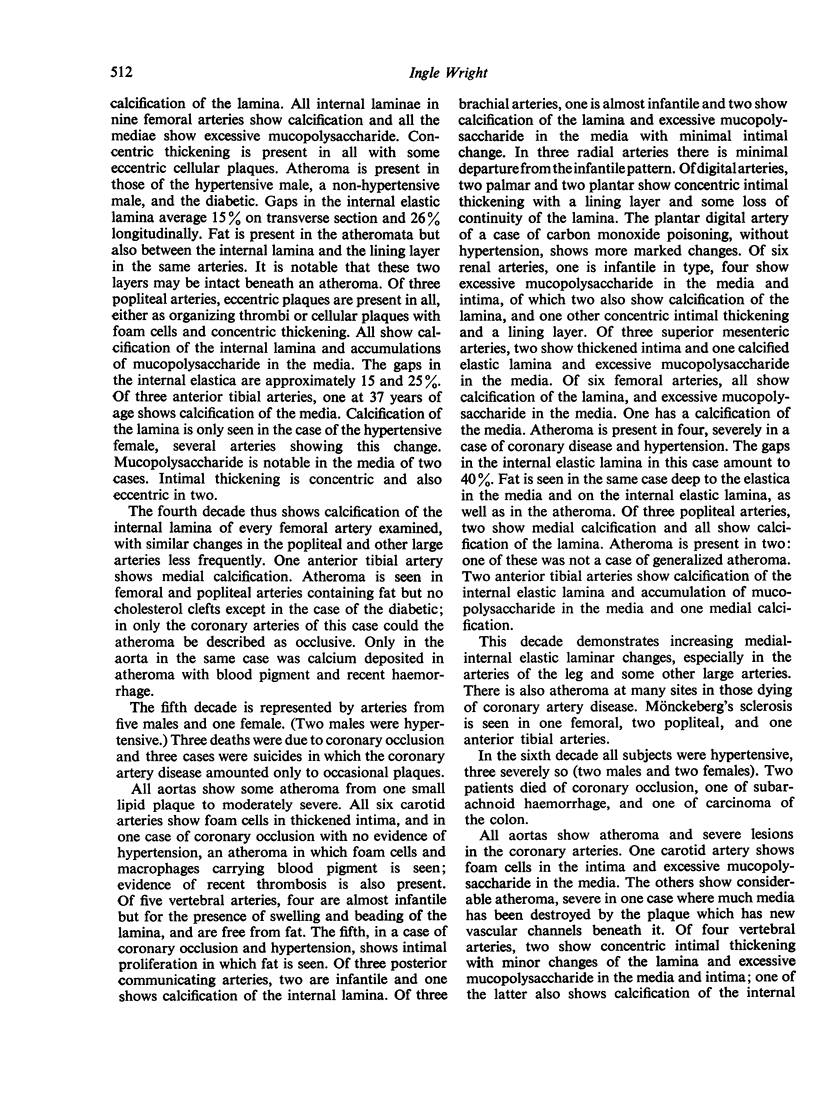
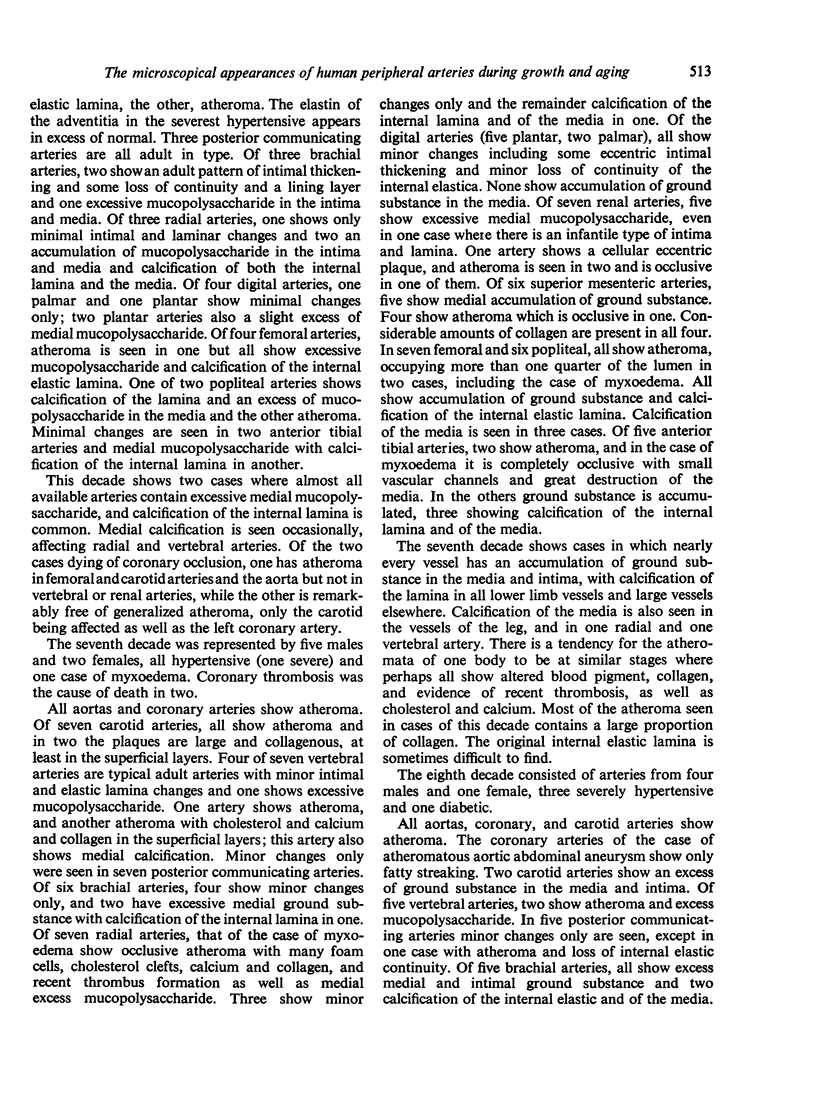
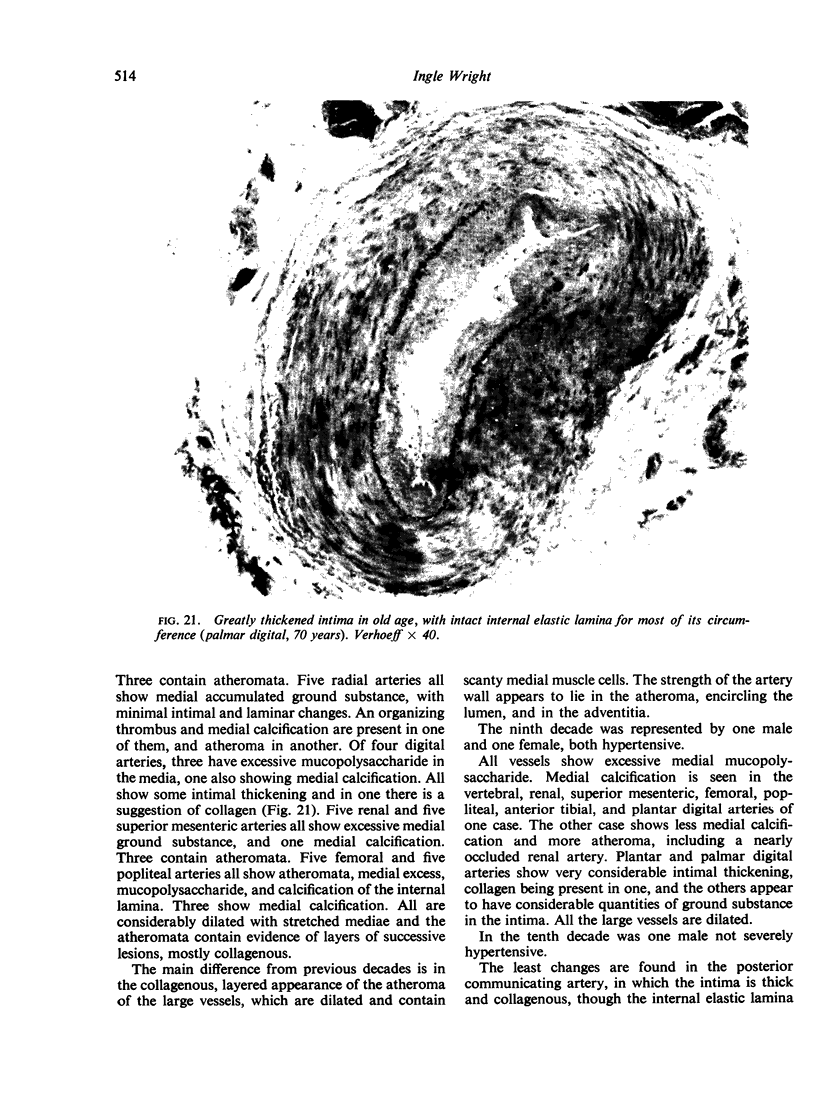
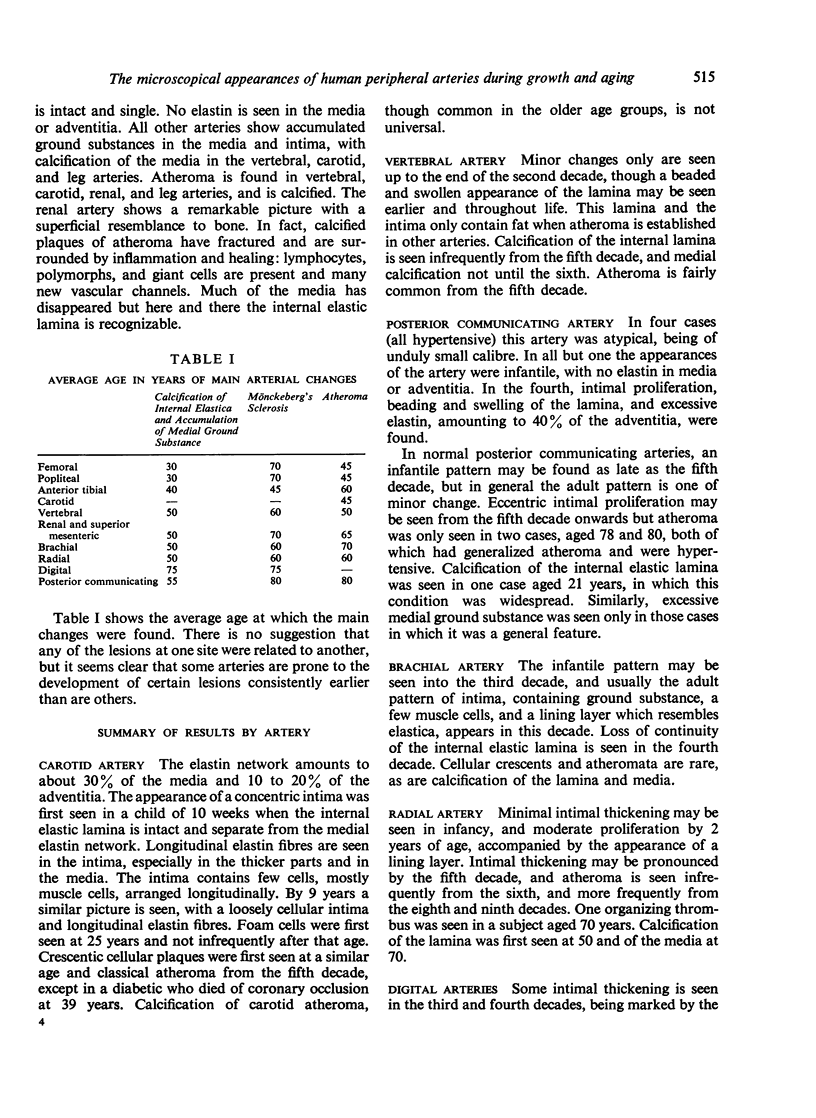
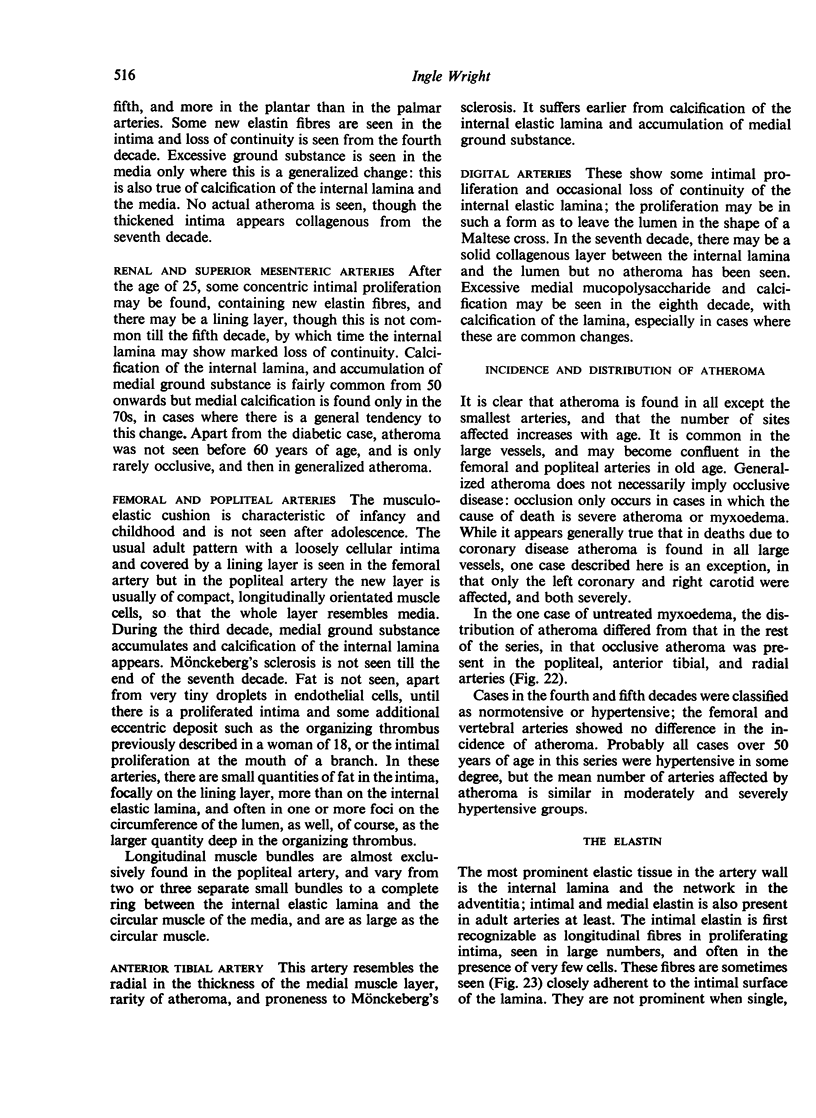

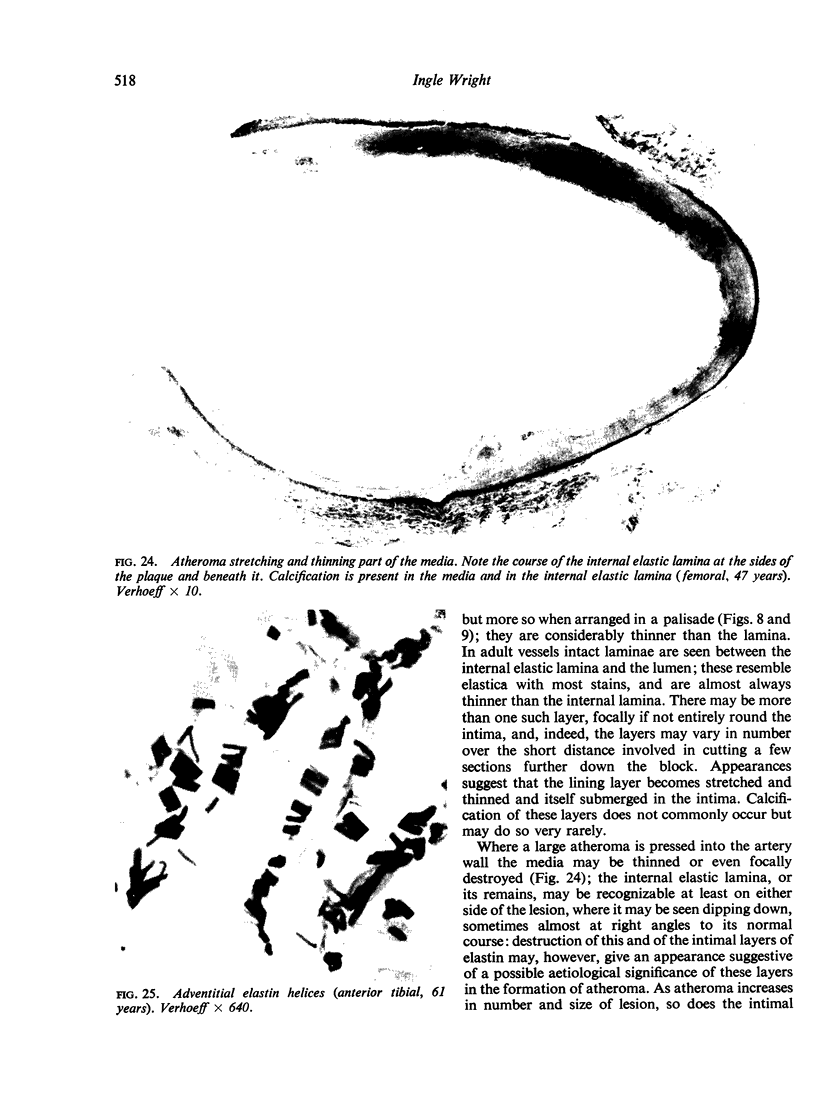


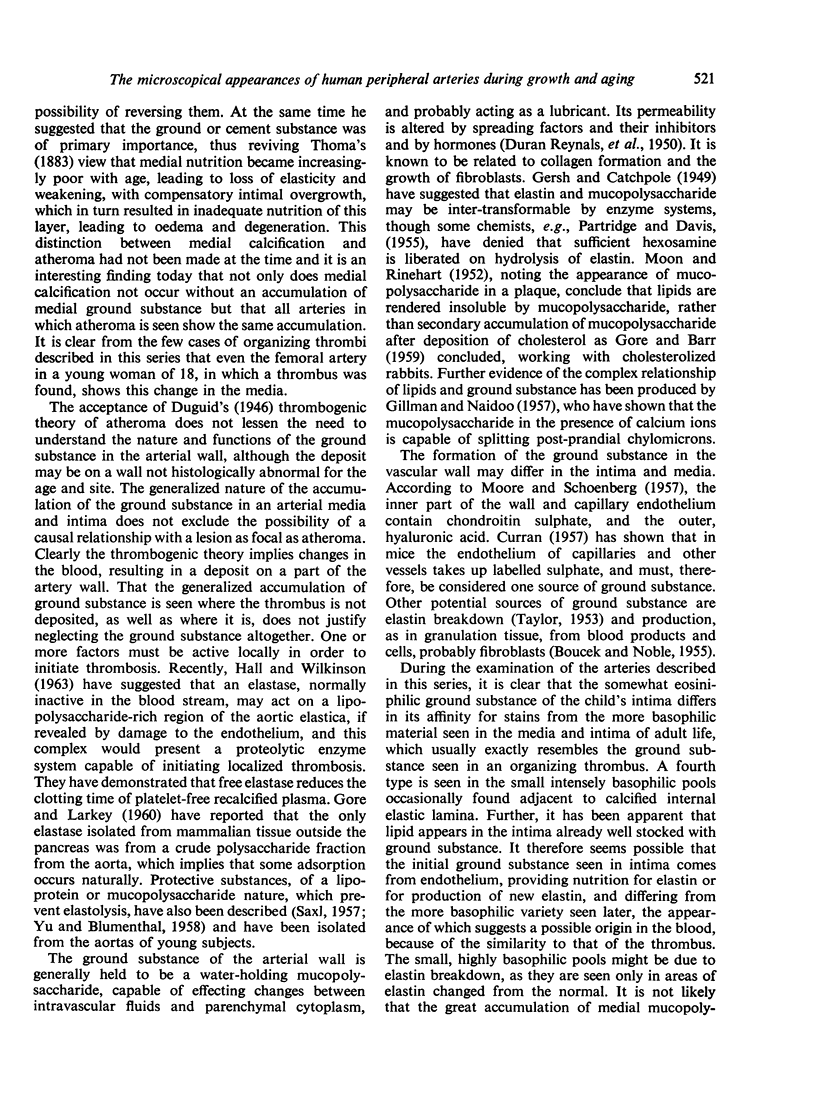
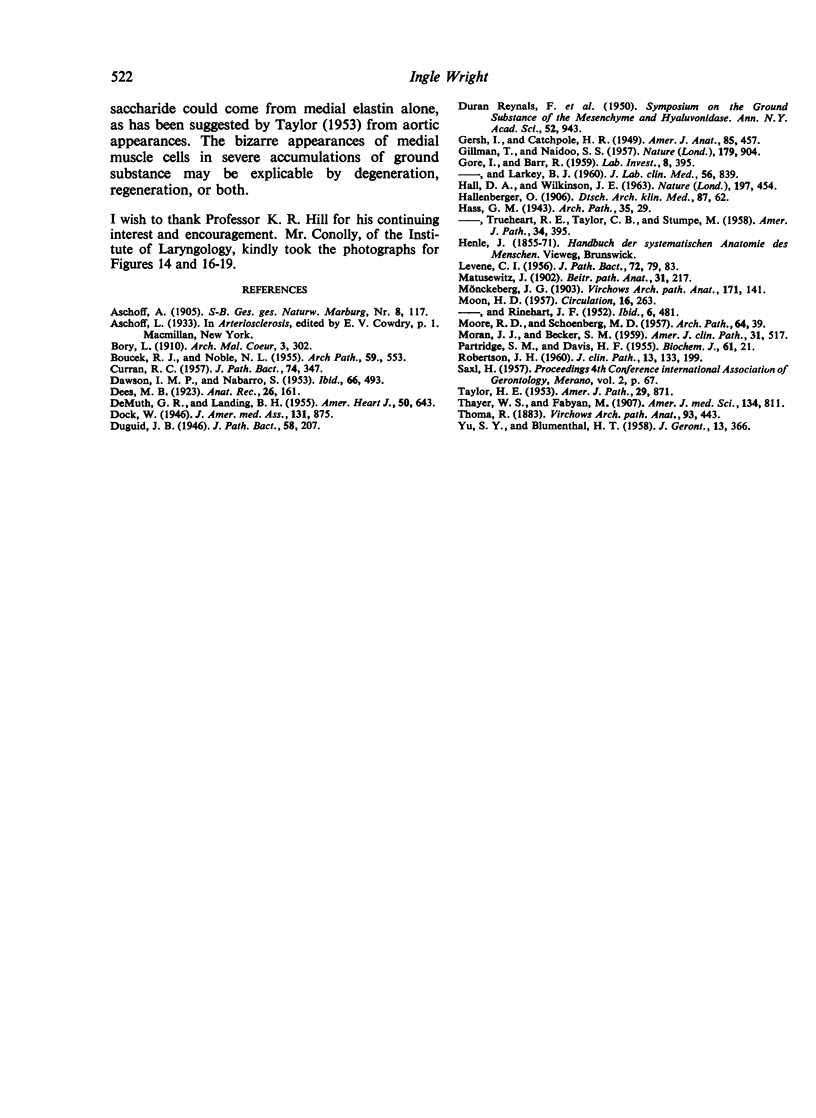
Images in this article
Selected References
These references are in PubMed. This may not be the complete list of references from this article.
- BOUCEK R. J., NOBLE N. L. Connective tissue; a technique for its isolation and study. AMA Arch Pathol. 1955 May;59(5):553–558. [PubMed] [Google Scholar]
- DAWSON I. M., NABARRO S. A case of intimal hyperplasia of arteries with hypertension in a male infant. J Pathol Bacteriol. 1953 Oct;66(2):493–498. doi: 10.1002/path.1700660220. [DOI] [PubMed] [Google Scholar]
- DEMUTH G. R., LANDING B. H. The occurrence and possible significance of generalized vascular disease in idiopathic cardiac hypertrophy. Am Heart J. 1955 Nov;50(5):643–650. doi: 10.1016/0002-8703(55)90172-1. [DOI] [PubMed] [Google Scholar]
- GERSH I., CATCHPOLE H. R. The organization of ground substance and basement membrane and its significance in tissue injury disease and growth. Am J Anat. 1949 Nov;85(3):457-521, incl 7 pl. doi: 10.1002/aja.1000850304. [DOI] [PubMed] [Google Scholar]
- GILLMAN T., NAIDOO S. S. In vitro effects of heparin and calcium ions on lipaemic serum. Nature. 1957 May 4;179(4566):904–905. doi: 10.1038/179904a0. [DOI] [PubMed] [Google Scholar]
- GORE I., BARR R. Mucopolysaccharides and experimental atherosclerosis in rabbits. Lab Invest. 1959 Mar-Apr;8(2):395–402. [PubMed] [Google Scholar]
- GORE I., LARKEY B. J. Functional activity of aortic mucopolysaccharides. J Lab Clin Med. 1960 Dec;56:839–846. [PubMed] [Google Scholar]
- HALL D. A., WILKINSON J. E. Elastase and thrombogenesis. Nature. 1963 Feb 2;197:454–455. doi: 10.1038/197454a0. [DOI] [PubMed] [Google Scholar]
- HASS G. M., TRUEHEART R. E., TAYLOR C. B., STUMPE M. An experimental histologic study of hypervitaminosis D. Am J Pathol. 1958 May-Jun;34(3):395–431. [PMC free article] [PubMed] [Google Scholar]
- MOON H. D. Coronary arteries in fetuses, infants, and juveniles. Circulation. 1957 Aug;16(2):263–267. doi: 10.1161/01.cir.16.2.263. [DOI] [PubMed] [Google Scholar]
- MOON H. D., RINEHART J. F. Histogenesis of coronary arteriosclerosis. Circulation. 1952 Oct;6(4):481–488. doi: 10.1161/01.cir.6.4.481. [DOI] [PubMed] [Google Scholar]
- MOORE R. D., SCHOENBERG M. D. Studies on connective tissue. I. The polysaccharides of the human umbilical cord. AMA Arch Pathol. 1957 Jul;64(1):39–45. [PubMed] [Google Scholar]
- MORAN J. J., BECKER S. M. Idiopathic arterial calcification of infancy; report of 2 cases occurring in siblings, and review of the literature. Am J Clin Pathol. 1959 Jun;31(6):517–529. doi: 10.1093/ajcp/31.6.517. [DOI] [PubMed] [Google Scholar]
- PARTRIDGE S. M., DAVIS H. F., ADAIR G. S. The chemistry of connective tissues. 2. Soluble proteins derived from partial hydrolysis of elastin. Biochem J. 1955 Sep;61(1):11–21. doi: 10.1042/bj0610011. [DOI] [PMC free article] [PubMed] [Google Scholar]
- TAYLOR H. E. The role of mucopolysaccharides in the pathogenesis of intimal fibrosis and atherosclerosis of the human aorta. Am J Pathol. 1953 Sep-Oct;29(5):871–883. [PMC free article] [PubMed] [Google Scholar]
- YU S. Y., BLUMENTHAL H. T. The functional significance of mucopolysaccharide obtained from cattle aorta. J Gerontol. 1958 Oct;13(4):366–373. doi: 10.1093/geronj/13.4.366. [DOI] [PubMed] [Google Scholar]



